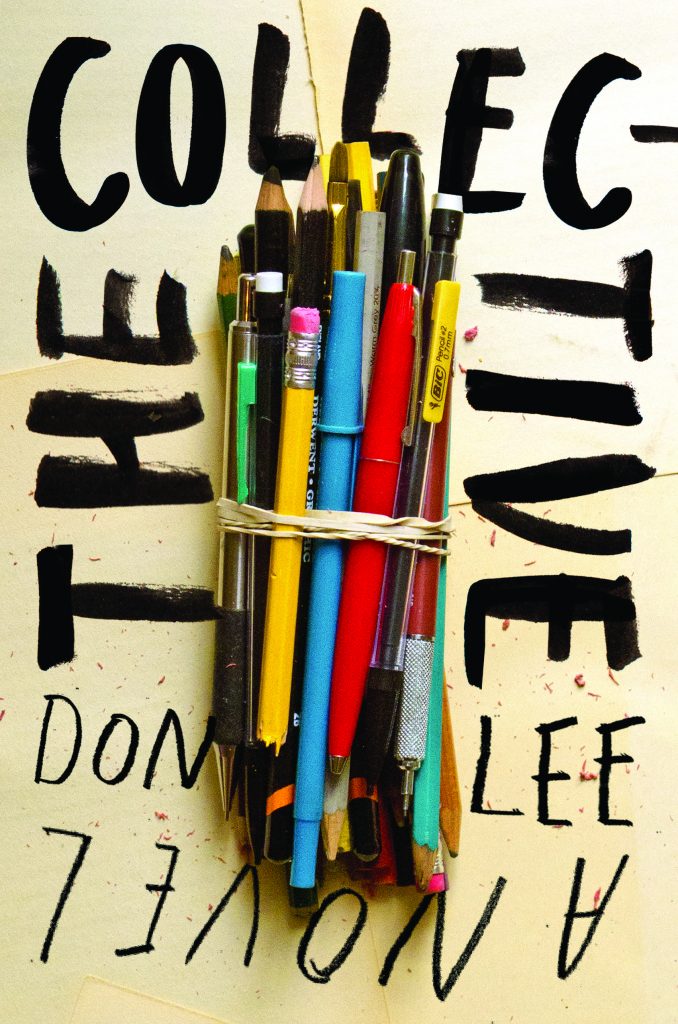The first Sarah we meet in Sam Cohen’s debut story collection, Sarahland, goes by the nickname Dr. Sarah (even though she is only a pre-med undergraduate) because there are just too many Sarahs in her friend group. Sarah A., Sarah B., and Dr. Sarah sit in a college dorm room that smells “perpetually of microwaved broccoli and Febrezed-over farts” watching the movie Heathers. They find much to relate to in the 90’s cult classic: they also belong to a group of girls defined by the same name and circle campus in unison. Accordingly, Dr. Sarah’s friends fawn over the group of Heathers (“Sarahs are just Jewish Heathers”) and scorn Winona Ryder as “demented,” but Dr. Sarah thinks it’s clear that her friends must be confused: “It isn’t the right way to watch the movie I was pretty sure. You’re supposed to want to be Winona Ryder, attached to a cool boy in a leather jacket who shoots up princesses and jocks and thereby shoots up culture itself.”
In an interview with Jewish Book Council, Cohen said she was thinking of Jose Muñoz’s Disidentifcations while writing, specifically the idea that queer stories re-visit narratives that have historically excluded them and find off-center ways to identify with the characters. Throughout Sarahland, a story collection in which nearly every protagonist is named Sarah, the various Sarahs of pop culture become outfits that Cohen’s characters can try on, either via a mystical arcade game or a fictional intervention: “She turns into Sarah from The Craft.” These playful gestures make it both clearer who this Sarah is—we immediately superimpose the images of those referenced—and also unavoidably less clear; she can’t actually be Sarah from The Craft, or Sarah Michelle Geller, can she?
Cohen riffs not only on the proto-girl-boss Sarahs of the ’90s but also on more ancient mythologies, re-visiting biblical stories and fairytales, participating in a queer tradition that spans from Jeanette Winterson’s Oranges are Not the Only Fruit to Andrea Lawlor’s Paul Takes the Form of a Mortal Girl. Sarahland opens with an allusion to Little Red Riding Hood:
You’ve read the story, but there’s no forest here, no wolf. No subterfuge is necessary; the boys are everywhere, out in the open, an infestation. Like cockroaches, they’re most visible at night. We stiletto them in the bellies and elbow them aside to clear a path down the hallway. We roll our eyes at their begging or pout and wag our fingers. We invite them in or pretend later we invited them in or slam the door in their faces or slam their fingers in the door. We grab one by the hand and continue down the hallway because he’s cute or because we want to fend off other boys or because we want to make someone jealous. We pretend to be angry at them or we pretend to like them or we feel angry or we like them.
Fairytales, and their moralistic parables, are invoked as framing devices, old tales working as a shorthand for setting up the normalized culture of sexual expectation and violence that the first story drops us into. In the final story of the collection, “The Purple Epoch,” cockroaches reappear as the last vestiges of the recognizable world. That there are no more fairytales by the end of Sarahland, only bugs, suggests two readings: perhaps darkly that horny infesting boys survive the human apocalypse, or more hopefully, that cockroaches are freed from the grand narrative and can resume being just scuttling things, no longer symbols. The latter implies something more along the lines of Muñoz’s argument: that the very act of identification has the power to alter existing narratives. In one of the collection’s later stories, “Becoming Trees,” Sarah explains the Greek myth of Apollo and Daphne to her partner, who is quick to label: “‘She’s a dyke?’ said Jan, interested now.” When they actually root down into the Earth and become trees at the end of the story, they are rejecting the world, the same world in which the first Sarah of Sarahland is raped, and writing themselves into the myth that has excluded them. As Jan says, “Can’t rape a tree.”
The act of story-telling has long been linked to self-making. Most of Sarahland’s stories are in first person, and a Sarah tells it herself, but other times it’s a close third or a speculative friend group all chiming in. All of these storytellers share the same library of references, contributing to a hive-mind sensation. Though not explicitly linked, the stories twin each other, refracting one another’s consciousness and circulating their own vocabulary like blood: things like noodles and dolphins and Buffy the Vampire Slayer swim around, always underhand and ready to be called into a story’s existence. Cohen’s stories charge one another with their overlap until we understand that Sarahs are basic, transcendent, and primordial all at once.
Cohen’s prose is lean, glistening, and sleek like a wetsuit. Wit and irony are refreshingly controlled substances used precisely to elicit cutting self-exposure. In “Gemstones,” a writer spends most of their days on the couch justifying their vocation to their partner: “I’m a poet,’ said Ry, clicking a pleather baseball cap into their online shopping cart.” Cohen’s talent livens moments of exposition to feel as pointed and original as rapid quips. After living abroad, a college dropout Sarah is disenchanted, for “she had seen that life could be an endless parade of tiny coffees and cigarettes.”
Cohen plays to her strengths best when she enters the minds of her Sarahs. They work things out in real-time, leaving behind one-liners in favor of more thorough trains of thought. At the beginning of the collection, Dr. Sarah considers the bizarre predestination of her life, charting the impression carefully:
I never understood how these things happened. Nowhere on any of the dorm’s advertising materials, which had succeeded in making me so excited to live with no parents in a building of studious eighteen-year-olds with a frozen yogurt machine, did it say the word Jewish, but it seemed wherever I went in my life, everyone was Jews. While I might think I was making independent choices and moving around freely in the world, it was as though a secret groove had been carved, and some invisible bumpers were going to push me gently back into that groove, the Jew groove, Sarahland, and Sarahland would trick me and trick me into thinking it was the entire world. It was confounding when I learned Jews were only 3 percent of the country, because, where was everybody else?
And when Sarah B. tells Dr. Sarah that she is going to be prelaw up until she’s able to get engaged, the strategy being she will never have to actually practice law, Dr. Sarah thinks: “It was a weird plan, so weird I wondered if Sarah B. was lying, like, was she stating her deepest fear as her goal so it would feel like success when it came true?” In the following story, a different Sarah is lifted out of her depression. She finally showers and dresses up but feels out of place in her messy car:
This was not who she was ew. She was a clean girl. The clean girl popped in a CocoRosie CD and watched her red lips in the rearview, singing about werewolves. She gazed out the window and watched the black outlines of palm trees and glowing letters of fast food shops and furniture stores as they whisked by in the thick dusk. The city finally felt like it existed for her.
Sarahs think and speak directly, colloquially; their varying circumstances or verbal tics are variations on a set of themes. Regardless of the narrative point of view, the consistent intimacy of their thoughts builds the admirable feeling that these stories are in service of their characters, rather than the other way around.
Sarahs are figuring out what they want and looking for a world that allows it. The fulfillment of their desires comes with epiphanies and possibilities; Sarahs breathe new life after having sex. In “Exorcism, or Eating my Twin,” Sarah attaches herself to a partner she obsessively believes is her twin, nicknaming her Tegan after the identical twin lesbian pop duo (“I am going to rename my twin, so I can stop saying “my twin.” I will call her Tegan. Because my name, already, is Sarah”). When they have sex, it’s practically revolutionary. Kissing feels,
like maybe not kissing at all but like something else, like maybe eating. Tegan’s breathing sounded heavy in a way that reminded me of whales and soon everything transformed into something so slick and open that I couldn’t help but feel like we’d been returned to sea. We stayed there for hours, in the promise of becoming primordial or futuristic.
Laying on top of Tegan, Sarah takes on an amorphous shape, fluid potential unspooling underneath them and anachronistically reminiscent of the stories to come. More literally, in “Dream Palace,” the rebirth we go through as a Sarah (“Now you are Sarah”) has an incoherent sexual dimension. We enter a bizarre structure in the middle of the desert, a gelatinous “womb” analog, and women with cat heads lick her/our entire body. In another of the building’s chambers, her elementary school bully fucks her. The Sarah of “All the Teenaged Sarahs,” feels “destroyed and remade” from her first lesbian experience: “Sarah sees that what she has is not a slice at all but a kind of meaty machine that can eat and expel and transfigure.” That consummated desire can re-animate these characters makes sense; these are queer coming-of-age stories where embracing sexual orientation involves its total exploration.
But Cohen breaks the coming-of-age mold in her unique de-emphasis on individuation. Sarahs want independence sometimes, but more often, they want belonging. They see other people as mirrors but also as portals. “Naked Furniture” Sarah becomes a “semi-lesbionic sister” with someone she looks uncannily alike, and this sister helps introduce Sarah to the fetish dungeon where she finally feels comfortable in a world that has always demanded her self-exposure for free. Exorcist Sarah projects onto Tegan when they meet at the Buffy the Vampire Slayer convention. In the fan fiction workshop that they both attend, Sarah says, “maybe independence shouldn’t be the goal. Maybe we should be striving to be part of a multi-person body,” citing the invincibility the show’s core cast has in sticking together. This attracts the attention of Tegan:
‘We have a really interesting overlap,’ she said. ‘I’m currently working on reclaiming parasitic lesbian relationships.”
‘Parasitic lesbian relationships,’ I echoed.
‘You know, there are all these negative representations of lesbians in novels and film,’ she said, ‘where one girl is a pathetic nothing who ends up taking on the style and persona of the other one, which is maybe who she wanted to be all along anyway.’ Her weight shifted to one foot. ‘I just want to claim being a parasite as a valid mode.’
‘being a parasite as a valid mode,’ I said, my heart secretly leaping.
It’s not that Cohen indulges every desire that her characters have – exorcist Sarah definitely does not get the relationship she is looking for. Instead, Cohen articulates the queerness of their desires with seemingly no authorial standing point. Long before and long after the brief interlude in which we are Sarah, we have unmediated access to Sarahs —their wishes, thoughts, and experiences. We find ourselves subsumed in their collective body, striving towards an immunity from what one Sarah calls the “Grand Shitpile,” from the fact that “every way society defines girls is horrible.” Sarahs want to find a way to live outside of the way things are. While each story doesn’t reach this resolution on its own, together they write and rewrite a giant composite Sarah, one that gets closer to that new world but never actually reaches it in one piece. In “Gemstones,” a non-Sarah character, Ry, has a conversation with their partner Manny:
“What’s that theorist guy you like say?” Manny asked.
“Queerness is not yet here?” Manny was trying to connect to Ry on Ry’s terms.
“Yeah, queerness is not yet here,” Ry repeated. “José Muñoz.”
“Well it’s not yet here,” Manny declared. “So for now, you gotta figure out how to get that period stain out of the sheets before it’s bedtime, or else go to Target to get some new ones.”
Though Cohen’s writing remains clearheaded and direct as the worlds she articulates breakdown and become more surreal, these forays are less compelling than the inventions she so successfully embeds in the real world. Sarah and Jan becoming trees, the dream sequence in the womb, the trash-strewn era of a radioactive ocean, manifest as weirder but ultimately neater stories. They are less complicated snapshots that rely on strangeness for substance. Still, it’s clear that they service the broader project of evolution that Sarahland is interested in: an evolution that “The Purple Epoch” makes literal – the post-apocalyptic world gives birth to a Sah-wah creature who feels “so grounded, so alive, so home.” It’s not lost on us, though, that the place these animals feel grounded and alive is an acrylic kind of hell, a collage of garbage inhospitable to human life.
The Sarah who works in the fetish dungeon decides her favorite client is the out-of-state necrophiliac, who, “besides probably wanting all women dead,” seems “really sweet.” Sarah loves the job he asks her to perform and is especially talented at executing it. Playing dead, she relishes the way her limp body is attended to so closely as she lets her limbs fall over and over again. This endless attention is the same expansive gift Cohen gives to each one of her Sarahs. Sarahland is Tempur-pedic, and its characters collapse while the stories take perfect form around them, caring for them tirelessly, finding words for their desires, whatever they may be.
Sarahland is available from Grand Central Publishing.
Sam Cohen was born and raised in suburban Detroit. Her fiction is published in Fence, Bomb, Diagram, and Gulf Coast, among others. The recipient of a MacDowell fellowship and a PhD fellow at the University of Southern California, Cohen lives in Los Angeles.




